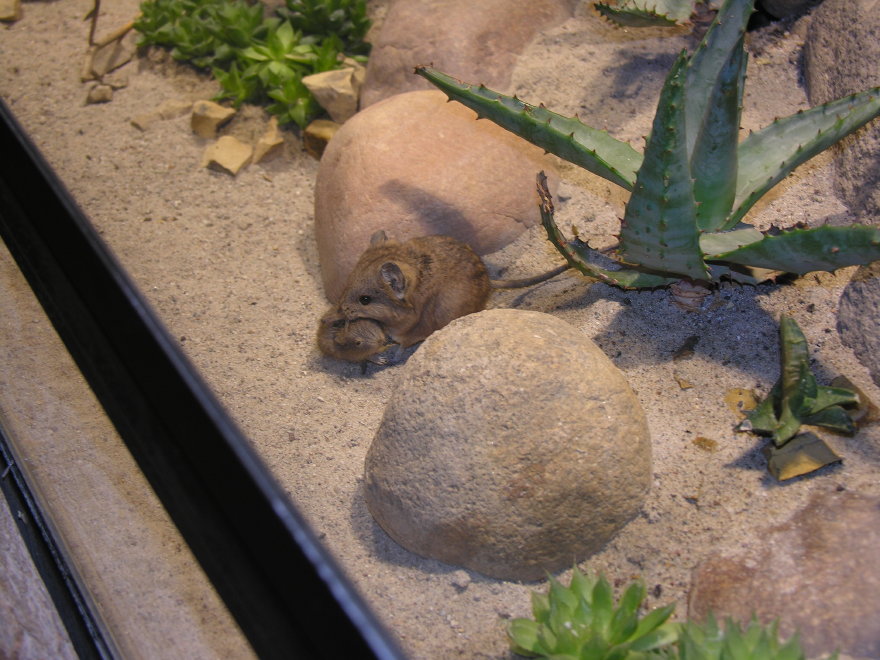Free Photo: Young Short-eared Elephant Shrew with it's Mother at the Leipzig Zoo, Germany
[Previous Page | Index | Next Page]

25leipzigzoo.jpg
The short-eared elephant shrew mostly inhabits Namibia, southern Botswana, and South Africa. The animal only lives in desert and semi-desert areas of the countries in which it is found. It hides in the sparse grass cover or bushes that are a part of these dry areas. They also burrow into the sand.
Compared to members of the other elephant shrew genus, the short-eared elephant shrew has shorter and rounder ears and lacks the pale rings around the eyes that are typical of those animals. The tail is hairy, with a visible gland on the underside. On the hind feet, the first digit is small and has a claw. The fur is usually long, soft, and is an orange, brown or grayish color on top and a lighter color on the underside. Adults often weigh between 40-50 grams with 100-110mm long bodies and 97-130mm long tails. Defining skull features include an enlarged auditory bullae and the appearance of three upper incisors, as well as a short rostrum and crowded teeth. Females also have six mammae.
The breeding season is in the warm, wet months of August and September. A female may have many pregnancies during one breeding season. Gestation for these animals is typically about 56 days and only two young are born, sometimes one. They are born in a very precocial state; they can run within a few hours after birth, are large in size, and are born with hair and their eyes open. Babies are weaned at 16-25 days and reach sexual maturity after about 43 days.
The female does not make a nest for the young; however, she will find a sheltered area and give birth to the young in it. The mother does not guard her young and is gone from the litter most of the time, coming back once a day to feed the young.
In the wild, these animals only live for 1-2 years. In captivity they can live as long as 3-4 years. (source: http://animaldiversity.ummz.umich.edu/site/accounts/information/Macroscelides_proboscideus.html)
[Previous Page | Index | Next Page]
This page last updated January 2015
Visit http://www.TechnologySite.org for free
photos and lists of inventions and technology. Visit http://www.ClimateChangeFacts.info for unbiased
information about climate change. Visit http://www.ClimateCooling.org for eye-opening
biased information on global cooling and climate change and visit http://www.OceanAssoc.com for fisheries
and oceans consulting services.